Blood Pact: Affliction’s toolkit in Legion
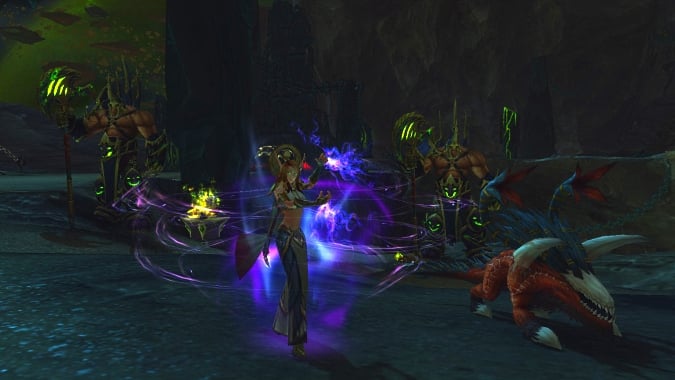
Yes, we’re still talking Affliction in Legion, but don’t worry, once Demonology and Destruction make their respective debuts on the alpha, I’ll probably be doing nonstop non-Affliction then. I haven’t figured out the complete theorycrafting yet, but I’ve pressed all the Affliction buttons at least a few times each. I’m skipping over the Artifact traits this week because the Artifact’s main mechanic was so buggy that I’m not sure I should yet judge how it helps us deal damage. Instead, we’ll look at Affliction’s toolkit as a whole, keeping the already-covered talents in mind.
Utility for Affliction
If you pulled out all the abilities you had as an Affliction Warlock, you’d have somewhere around 30 action bar slots. Around half of those abilities are utility-type abilities, so you can safely place them on non-keybind action bars, as they’re not critically important to most casual combat. For example, every Warlock who completes the class hall opening questline will receive the ability Ritual of Return, which teleports us to our class hall in the Dreadscar Rift, but you probably won’t have this keybound within reach unless you do a lot of traveling. You’ll wan to keybind the other half of spellbook and talented abilities however, for critical use in combat.
Demonic pets: Eye of Kilrogg is still around, and we also retain Health Funnel, which we can use to heal our controllable pet if necessary. Once you choose a Grimoire from the level 90 talent tier, you may have an extra button to use for pet purposes.
We have our Summon Demon flyout, which contains the basic controllable pet demons available to Warlocks: Imp, Voidwalker, Felhunter, Succubus, and for Demonology Warlocks only, Felguard. We have our Doomguard and our Infernal, though these abilities will also be in the Summon Demon flyout if you pick the level 100 talent Demonic Servitude. The Doomguard and Infernal without the talent have shorter Legion cooldowns to compensate for the lack of a Dark Soul damage cooldown. Each pet, including the Doomguard and Infernal, costs one Soul Shard to summon — you can have five Soul Shards maximum.
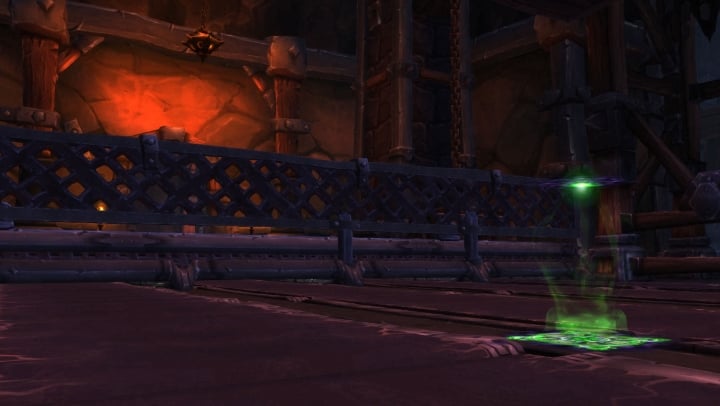
Movement and survivability: Warlocks have no baseline movement speed boost ability. We must talent into Burning Rush in the level 75 talent tier in order to have one. To the dismay of many Warlocks, Demonic Circle has been taken out of the baseline spellbook and placed into the talent tier with Burning Rush and Dark Pact, which is simply a renamed Sacrificial Pact. Our baseline damage reduction ability is Unending Resolve, though it looks like its many variations through major glyphs didn’t make the baking cut, so we have just the regular 40% reduction and interrupt immunity for 8 seconds.
Crowd control: We have three crowd control abilities, plus one optional ability through the level 45 talent tier and our various normal pet abilities. I didn’t get a chance to extensively test pet abilities, because some abilities were bugging and some were just plain missing. With talents we have a choice between Mortal Coil and Howl of Terror, which are horror or fear effects. Our baseline Warlock crowd control abilities are Fear, Banish, and Enslave Demon, like usual.
Group and self utility: Most of our utility spells in general did not change. We still have Ritual of Summoning, Create Soulwell, and Demonic Gateway for group utility. We also still have Soulstone, Healthstone, and the self-buff Unending Breath. Our own passive health boost through Fel Armor is still in the spellbook, but the group-buffing, column namesake Blood Pact is gone, along with Dark Intent and the other raid stat buffs.
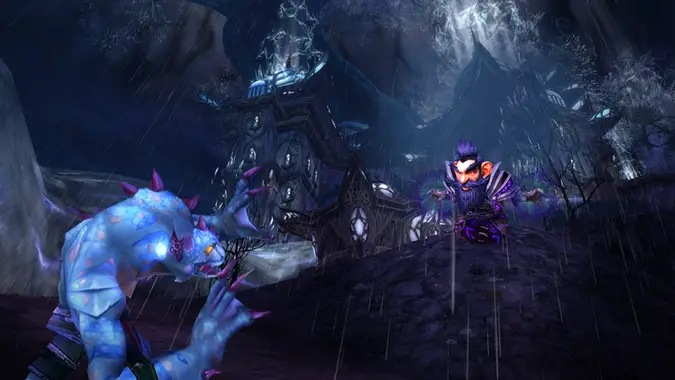
Periodic power party
The main meat of the spellbook that most new Warlocks care about are the damage dealing spells. Affliction isn’t just DoT-centric, it’s almost entirely periodic damage, as its only possible direct damage spell outside of a pet attack is in a talent choice. We have a total of four main DoTs as Affliction: our standard three of Unstable Affliction, Corruption, and Agony, and a new DoT, Reap Soul, added as the first trait ability by Ulthalesh, our artifact weapon.
- Reap Soul is on a 45-second cooldown but lasts for 42 seconds, ticking once every 3 seconds to start. This DoT’s unique trait is that each time it deals damage, its damage-dealing frequency speeds up. I didn’t fully test this DoT, but even doing some napkin math on what the tick period might look like, I wonder if there will be a tick period minimum limit. At reasonable levels of haste combined with a Bloodlust buff, the tick period gets ridiculously short. Alternatively, it’s only the early buggy builds of alpha and my math might be wrong anyway, as I could possibly have misconstrued how the DoT is meant to work.
- Unstable Affliction now costs one Soul Shard and is nearly halved in duration, sitting at 8 seconds in Legion, down from its Warlords base duration of 14 seconds. It still retains the dispel silence and damage. If the target dies while debuffed with Unstable Affliction, the Soul Shard is refunded, which is an interesting swap of a familiar mechanic. Previously, Affliction has refunded shards on the filler or execute ability Drain Soul, which cost mana. Warlocks could generate more shards than they spent, essentially pooling shards for a powerful pressure period. In Legion, Affliction Warlocks will have to have already spent a shard to get a shard back upon mob death.
- Corruption is almost the same. It loses the Nightfall Soul Shard regeneration proc mechanic and becomes just a plain, 14-second long DoT. This allows Blizzard to revert the rule of only the last applied Corruption procs Nightfall mechanic, as it is no longer tied to the DoT that is spread easily with Seed detonations.
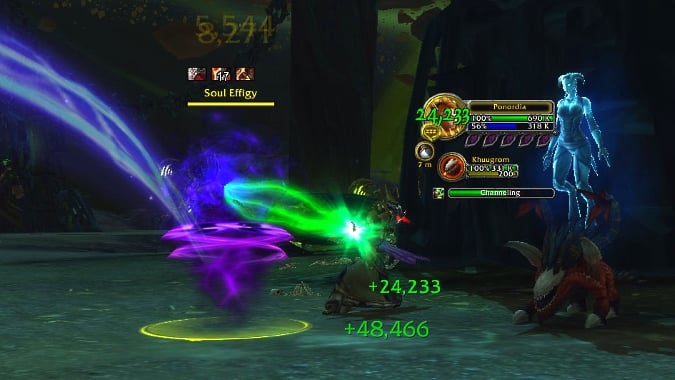
- Agony is the same as we know it, except that it gains the Nightfall regeneration proc that Corruption lost. It retains the same stacking behavior we all know now, and with a talent, it can stack to 20 instead of just 10. Agony has long been the DoT that you put up first on targets because it is often the most powerful DoT at points in a tier, and in Legion it will probably be the DoT you put up everywhere in order to gain back Soul Shards.
- Seed of Corruption is our AOE spell. Seed is a DoT, but you cast it for the detonation. Its old Soulburn effect has been baked into the baseline spell, so that the detonation of the original Seed will apply the DoT Corruption to all targets within 10 yards. Seed can be modified by the passive level 60 talent Sow the Seeds to consume an available Soul Shard and apply Seed of Corruption to 4 more targets near the original Seed application. If Seed doesn’t consume a Soul Shard because you have none, then it acts as if you didn’t have the talent.
- Life Tap is Affliction’s mana regeneration mechanic, which sacrifices 10% health for 30% mana. To compensate for deliberately taking damage regularly in a fight, Affliction Warlocks have self-healing mechanics, namely through our Legion filler, Drain Life, which not only deals damage but also heals the caster when channeled. Life Tap is a source of problems for balancing Affliction Warlocks, as it demands we have passive healing in order to not kill ourselves even in zero-damage situations like shooting at a training dummy. In Legion, Drain Soul is our alternative Drain Life, providing a tradeoff between damage and healing, instead of trying to balance several sources of passive healing. Since Drain Soul is a talent that passively replaces Drain Life, we have a choice between the one that does more healing or the one that does more damage, rather than being too powerful in both spheres with one spell.
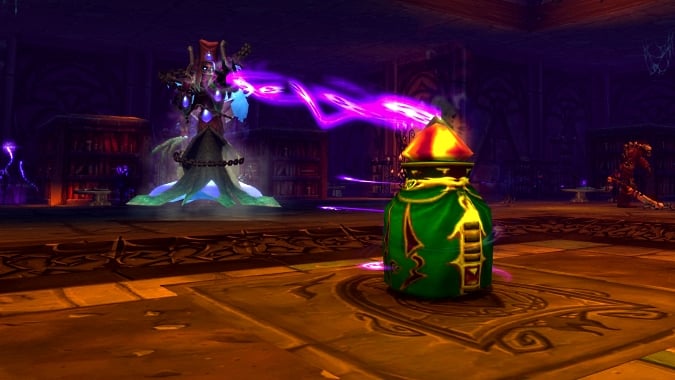
Affliction’s weakness
Despite being a spec with a reputation for micromanagement play, Affliction doesn’t have precise control over its damage done. Aside from commanding a pet to attack, Affliction has only one targeted direct damage spell in its entire toolkit — Haunt — and in Legion, Affliction Warlocks will need to talent into that. Once DoTs are applied to a target, there isn’t a way to stop them from dealing damage until they expire.
When a raid leader calls for an all-stop on damage dealing, the Affliction Warlock is fairly helpless to comply, unless she let her DoTs expire in time for the call, rather than refreshing them earlier. Stopping the filler’s channeled cast doesn’t slow down the Affliction pain train very much, as most of Affliction’s damage is concentrated in the applied DoTs. Most Affliction Warlocks accept this fate and just refresh their DoTs anyway in the name of more damage, but the lack of non-periodic damage spells does occasionally present a problematic obstacle for Affliction.
DoTs and the channeled fillers also require a target to be debuff-able in order to apply their damage. Perhaps it’s a minor complaint, but Affliction Warlocks have a really hard time trying to kill simple enemy utility like banners and totems because of the object’s debuff immunity. The argument for countering a want for a totem-killing direct damage spell is that the Affliction Warlock’s specific role in the wide damage dealing spectrum is to provide sustained single target damage. We’re not the kings of AOE and we’re not the kings of burst, but we can certainly add lots of pressure to specific singular targets, one or more at a time.
Please consider supporting our Patreon!
Join the Discussion
Blizzard Watch is a safe space for all readers. By leaving comments on this site you agree to follow our commenting and community guidelines.
 @_poneria
@_poneria




